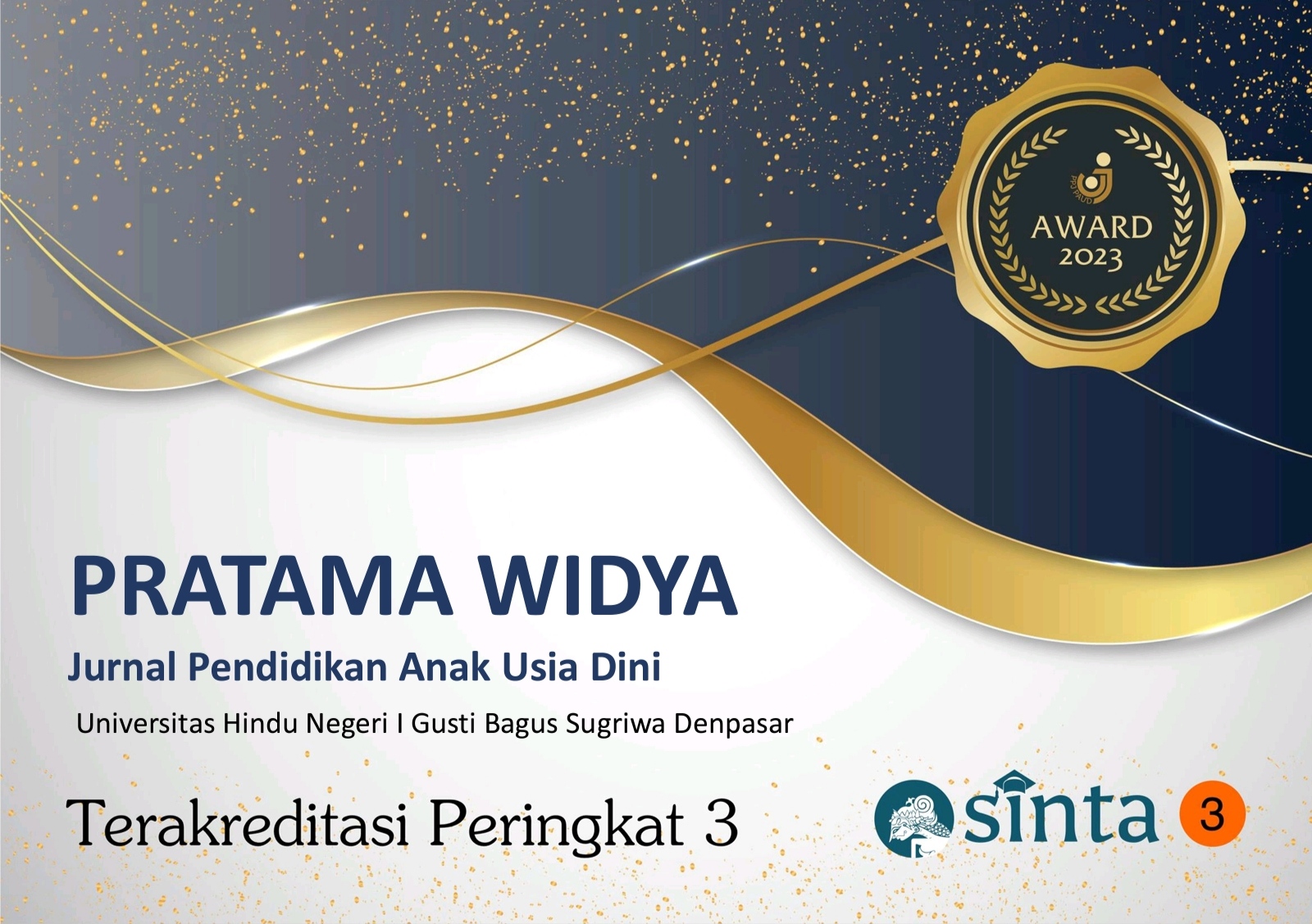SYNTACTICAL BOOTSTRAPPING IN EARLY CHILDHOOD LANGUAGE DEVELOPMENT
DOI:
https://doi.org/10.25078/pw.v9i2.3998Keywords:
Syntactic Bootstrapping, Children's Language Acquisition, Word Learning, Syntactic Development, ToddlersAbstract
This present study examines the process of syntactic bootstrapping in toddlers, focusing on how children utilize sentence structure to understand the meaning of new words. Syntactic bootstrapping is considered an important mechanism in language acquisition, where children use their developing syntactic knowledge to infer the meaning of unfamiliar words. This longitudinal study involved 15 toddlers aged 2-4 years, who were followed over a year. Through a series of experimental procedures, we tested the children`s ability to use syntactic information to interpret verbs. The results indicate that syntactic bootstrapping ability developed significantly over the study period. Children showed an increased ability to use argument structures to infer the meaning of verbs. Regression analysis revealed a positive correlation between syntactic bootstrapping ability and vocabulary size, suggesting a reciprocal relationship between syntactic and lexical development. Moreover, individual differences in syntactic bootstrapping ability were related to variations in the linguistics input children into the mechanism underlying early language acquisition and highlight the importance of syntactic bootstrapping in word learning. The implications of this study are relevant to theories of language development, early language intervention, and language teaching strategies. Theoretically, this current research can serve as a basis for educational interventions for children who show delays in language development.
References
Bloom, P. (2000). How Children Learn the Meanings of Words. MIT Press. https://doi.org/10.7551/mitpress/3577.001.0001
Carey, S. (2016). The Child As Word Learner. In M. Halle, J. Bresnan, & G. A. Miller (Eds.). In Linguistic Theory and Psychological Reality. MIT Press.
Carey, S., & Bartlett, E. (2018). Acquiring A Single New Word. Papers and Reports On Child Language Development.
Clark, E. V. (2017). First language acquisition Eds. IV. Cambridge University Press.
Fenson, L., Marchman, V. A., Thal, D. J., Dale, P. S., Reznick, J. S., & Bates, E. (2007). MacArthur-Bates Communicative Development Inventories: User’s guide and technical manual (2nd ed.). Brookes. https://doi.org/10.1017/S0305000900009302
Fisher, C., Gertner, Y., Scott, R. M., & Yuan, S. (2010). Syntactic Bootstrapping. Wiley Interdisciplinary Reviews: Cognitive Science, 1(2), 143–149. https://doi.org/10.1002/wcs.17
Friederici, A. D. (2011). The Brain Basis of Language Processing: From Structure To Function. Physiological Reviews, 91(4), 1357–1392. https://doi.org/10.1152/physrev.00006.2011
Gentner, D. (2005). Why Nouns Are Learned Before Verbs: Linguistic Relativity Versus Natural Partitioning. Center for the Study of Reading Technical Report, 257.
Gleitman, L. R., Cassidy, K., Nappa, R., Papafragou, A., & Trueswell, J. C. (2005). Hard Words. Language Learning and Development, 1(1), 23–64. https://doi.org/10.1207/s15473341lld0101_4
Göksun, T., Küntay, A. C., & Naigles, L. R. (2008). Turkish Children Use Morphosyntactic Bootstrapping In Interpreting Verb Meaning. Journal of Child Language, 35(2), 291–323. https://doi.org/10.1017/S0305000907008471
Hart, B., & Risley, T. R. (2013). Meaningful differences in the everyday experience of young American children Eds. 2. MD: Paul H. Brookes Publishing.
Hoff, E. (2014). Language development (5th ed.). Wadsworth Cengage Learning. https://doi.org/10.4431/8911-6611.00071
Hoff, E., & Naigles, L. (2017). How children use input to acquire a lexicon. Child Development, 73(2), 418–433. https://doi.org/10.1016/0010-0277(95)00681-8
Hulme, C., & Snowling, M. J. (2009). Developmental Disorders Of Language Learning and Cognition. John Wiley & Sons. https://doi.org/10.1002/9780470745052
Kodish, E. (2005). Ethics and Research With Children: A Case-Based Approach. Oxford University Press. https://doi.org/10.1093/0195171780.001.0001
Kuhl, P. K. (2004). Early Language Acquisition: Cracking the Speech Code. Nature Reviews Neuroscience, 5(11), 831–843. https://doi.org/10.1038/nrn1533
Lailiyah, N., & Dwiyanti, L. (2018). The Analysis of Syntax on Language Acquisition of Three Year-Old Children in Perum Graha Mukti Regency Kediri. JURNAL INDRIA, 3(1), 50–60.
Lailiyah, N., & Wijaya, I. P. (2019). Syntactic Analysis of Language Acquisition in Three-Year-Old Children Based on Cultural Background. JPUD - Jurnal Pendidikan Usia Dini, 13(1), 58–71. https://doi.org/10.21009/10.21009/jpud.131.05
Landau, B., & Gleitman, L. R. (2016). Language and Experience: Evidence From the Blind Child Eds. IV (VI). Harvard University Press. https://doi.org/10.4159/harvard.9780674334403
Leonard, L. B. (2014). Children With Specific Language Impairment. MIT Press. https://doi.org/10.7551/mitpress/9152.001.0001
Lidz, J., Gleitman, H., & Gleitman, L. (2003). Understanding How Input Matters: Verb Learning and the Footprint of Universal Grammar. Cognition, 87(3), 151–178. https://doi.org/10.1016/S0010-0277(02)00230-5
Markman, E. M. (2017). Constraints Children Place On Word Meanings. Cognitive Science, 14(1), 57–77. https://doi.org/10.1207/s15516709cog1401_4
Naigles, L. (2015). Children Use Syntax To Learn Verb Meanings. Journal of Child Language, 17(2), 357–374. https://doi.org/10.1017/S0305000900013817
Saffran, J. R., Aslin, R. N., & Newport, E. L. (2015). Statistical Learning By 8-Month-Old Infants. Science and Technology in Second Language, 274(X), 1926–1928. https://doi.org/10.1126/science.274.5294.1926
Tomasello, M. (2000). Do Young Children Have Adult Syntactic Competence? Cognition, 74(3), 209–253. https://doi.org/10.1016/S0010-0277(99)00069-4
Tomasello, M. (2003). Constructing a language: A usage-based theory of language acquisition. Harvard University Press.
Tomasello, M., & Kruger, A. C. (1992). Joint attention on actions: Acquiring verbs in ostensive and non-ostensive contexts. Journal of Child Language, 19(2), 311–333. https://doi.org/10.1918/glco.2001.0471
Tomasello, M., & Stahl, D. (2004). Sampling children’s spontaneous speech: How much is enough? Journal of Child Language, 31(1), 101–121. https://doi.org/10.1017/S0305000903005944
Downloads
Published
How to Cite
Issue
Section
License
Copyright (c) 2024 Nur Lailiyah, Yolanda Rensia Gigik

This work is licensed under a Creative Commons Attribution-NonCommercial-ShareAlike 4.0 International License.







